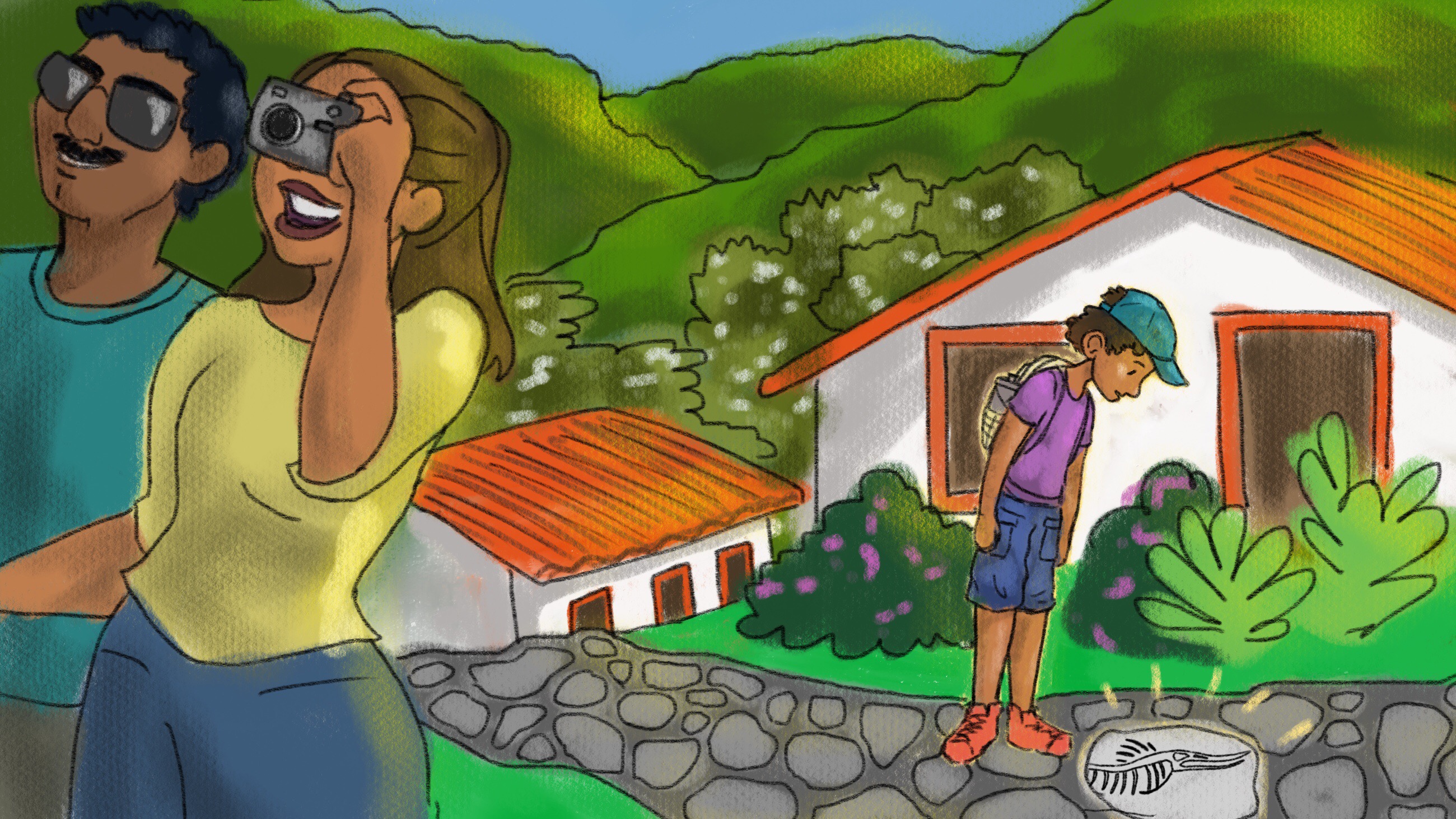 Olivia DeBourcier
Olivia DeBourcierWithin a Columbian monastery, right under the feet of unknowing tourists, lay the nearly perfect outline of a 90-million-year-old fish waiting to be discovered.
In 2014 a 10-year-old boy was on vacation with his family in the Monastery of La Candelaria when he spotted the fish fossil. Most adults may have been too distracted by the beautiful gardens or historic monastery buildings to be looking at the slate rock path they were walking on where the little fish lay entombed. But luckily for the paleontological world this boy was a little more interested in the ground. He spotted the fossil and thinking it might be the remains of a baby ichthyosaur, brought a picture of the find to the Paleontological Research Centre nearby. The centre, which is run mostly by palaeontology enthusiasts, contacted researchers at the University of Alberta to help them identify the specimen.
Oksana Vernygora, a PhD student in the Department of Biological Science, is the lead author on the paper which identified the fossil as being a new species. She worked on the study with Javier Luque, a PhD candidate in biology at the U of A.
Despite being walked over each day for over a decade the fossil was in remarkably good condition for study. However, the tail half of the specimen was not found.
Curious as to where the fossil came from, the researchers and staff of the Paleontological Research Centre teamed up with the monastery to reach back in the records. Renovations which finished some 15 years earlier had replaced the path with new stones. And after some collaborative investigating they found the fossil came from a quarry half an hour away.
The fish, named Candelarhynchus padillai, is approximately 90-million-years old and is a new group of fish to be found in South America. It lived in highly salinated and fast flowing water during the Cretaceous period. Similar to its current day relative the barracuda, Candelarhynchs had a long snout and a slender body. Judging by its fine teeth it ate small invertebrates and other fish. This particular specimen was estimated to be about 40 centimetres long. It was an open water swimmer and resembled other fish of that time found in what is now the Mediterranean.
“To me (studying fish) is a lot about looking at changing diversity,” Vernygora said. “Because fish give us an amazing opportunity to look at how this continuum of fish diversity changes over time.”
[perfectpullquote align=”full” bordertop=”false” cite=”” link=”” color=”” class=”” size=””]”It’s in a way this predicting game. Looking in the past, comparing to the present, and projecting into the future.”[/perfectpullquote]Fossil records in the tropics are remarkably hard to come by. Excavating in thick vegetation and hot, humid weather is much more difficult than, for example, digs in the desert landscape of Dinosaur Provincial Park in Alberta.
“Being so far away from historically important centers of paleontological research like Europe or North America, (paleontologists) were mostly focused on their areas,” Oksana said. “Going into the tropics would require lots of resources.”
Oksana and Luque hope discoveries like these will bring attention to tropical paleontology.
“The tropics today are bursting in diversity, yet we know very little about tropical biodiversity in the past,” Laque said. “Colombia is a good example. It is one of the most mega-diverse countries in the world, and yet it wasn’t until a few decades ago that we have started to understand the importance of its fossil record. Every new discovery fills an important part of the puzzle of the evolution of tropical diversity through time.”
With the scientific paper now out, the research team is planning to have a video conference with the boy who discovered the fossil to tell him more about the discovery and send him a signed copy of the article by the authors and a replicate of the fossil.




